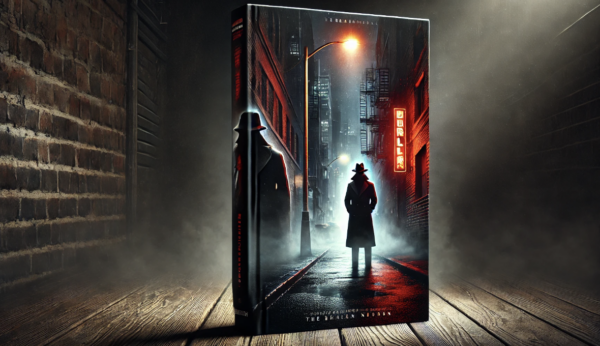Self-publishing has become an empowering avenue for authors to bring their stories and ideas to the world. In this digital age, where conventional publishing can be challenging to break into, self-publishing offers a viable alternative.
However, embarking on a self-publishing journey can be overwhelming, especially for first-time authors who want to self-publish.
The Self-Publishing Checklist:
Step 1: Defining Your Goals
Embarking on the self-publishing journey requires a clear sense of purpose and direction. The first step in your self-publishing checklist is to define your goals. What do you aim to achieve with your book? Understanding your objectives is essential because they will influence every decision you make throughout the entire publishing process.
For many aspiring authors, self-publishing represents a chance to establish themselves as published authors. It’s an opportunity to share their unique voices and stories with the world, bypassing the traditional gatekeepers of the publishing industry.
Others may have a deeply personal story to tell, aiming to connect with readers on a profound level. Some authors are driven by a desire to educate and inspire others, leveraging their expertise to make a positive impact.
Your goals will help you determine the best path forward. They will guide decisions regarding your choice of publishing platform, book cover design, manuscript formatting, and marketing strategy. Whether your goal is to see your name on the New York Times bestseller list, create a captivating front and back cover, gather advance review copies for a successful launch, or reach more readers with your story or knowledge, defining your goals is the pivotal starting point in your self-publishing adventure.
As you embark on this journey, remember that self-publishing empowers authors to take control of their work, sidestep conventional wisdom, and connect directly with people interested in their niche. It allows you to create a professional product, complete with an author bio, and enter the digital publishing landscape. So, start by articulating your goals clearly and use them as your North Star throughout the exciting steps involved in bringing your book to life.
Step 2: Writing and Editing
The heart of any self-published book is its content. This is where your creativity and passion truly shine, and it’s the cornerstone of your self-publishing journey. In this step, you’ll start by writing your manuscript, transforming your ideas, stories, or expertise into a well-crafted narrative that captivates your readers.
When you begin writing, it’s important to let your imagination flow freely. Don’t worry about perfection in your first draft. The fun part of the writing process is giving life to your ideas, characters, or concepts. Write without inhibition, and remember that you can refine and polish later.
Once you’ve completed your initial draft, take some time away from your work. This distance will provide fresh perspectives when you return for revisions. Address plot holes, inconsistencies, and any areas that require improvement. The first draft is just the beginning; it’s the foundation upon which your final manuscript will be built.
Editing is a critical step in ensuring the quality and professionalism of your work. Consider enlisting the services of a professional editor who can review your manuscript with a discerning eye. They will correct grammar, spelling, and punctuation errors, ensuring that your prose is polished to perfection.
Most self-published authors understand the value of professional editing. An editor can help you maintain consistency in your writing style, eliminate redundancies, and ensure a coherent and engaging narrative. They are instrumental in turning your manuscript into a book that stands shoulder-to-shoulder with traditionally published titles.
Step 3: Cover Design
Your book’s cover is your first chance to make a lasting impression on potential readers. As the saying goes, “Don’t judge a book by its cover,” but in reality, people often do. Investing in a professional cover designer is a crucial step in your self-publishing checklist.
A professional cover designer has the expertise to create an eye-catching and genre-appropriate cover that aligns with the expectations of your target audience. They understand the importance of not only making your book visually appealing but also conveying its essence and genre through design elements.
The front cover should grab attention, while the back cover provides essential information like your book’s description and author bio. A well-designed cover not only entices readers but also lends credibility to your work, making it look as professional as books from traditional publishers.
Remember, your book cover is often the first interaction potential readers have with your work. Investing in a professionally designed cover is an investment in the success of your book.
Your Publishing Journey Awaits – Start NowStep 4: Manuscript Formatting
Proper manuscript formatting is a crucial aspect of the self-publishing process that contributes to the professional appearance of your book. It ensures that your work is presented in a polished and reader-friendly manner.
To begin, convert your manuscript (word document) into a properly formatted digital document, usually in a word processing software like Microsoft Word or Google Docs. Pay attention to font styles, sizes, and spacing to adhere to industry standards. Consistency in formatting throughout the entire document is essential for a cohesive look.
The interior layout file of your book should meet industry standards to ensure that it translates well into various digital and print formats. This step ensures that your readers have a seamless reading experience, whether they choose an eBook or a printed copy of your work.
By giving due attention to manuscript formatting, you contribute to the overall professionalism of your self-published book, which can significantly impact how it is perceived by readers and industry professionals alike.
Step 5: ISBN and Copyright
Securing an International Standard Book Number (ISBN) and registering your copyright are pivotal steps in the self-publishing checklist. These actions not only protect your intellectual property but also open doors to wider distribution channels.
An ISBN is a unique identifier for your book, allowing it to be recognized and cataloged by libraries, bookstores, and online retailers. It’s essential for tracking sales and facilitating orders. Additionally, registering your copyright provides legal protection, safeguarding your creative work against unauthorized use.
Together, these steps grant your book the credibility and professionalism required to compete in the publishing world. They also enable your book to be listed on platforms like Amazon, Barnes & Noble, and other major retailers.
Step 6: Choosing a Publishing Platform
Selecting the right publishinprog platform
This is a pivotal decision in your self-publishing journey. With a plethora of options like Amazon KDP, IngramSpark, and Draft2Digital available, it’s essential to research each platform’s advantages and choose the one that aligns with your goals.
Factors for success
Consider factors such as distribution channels, royalties, and ease of use when choosing. Amazon KDP, for example, offers extensive market reach and a straightforward interface, making it a popular choice for many self-published authors. IngramSpark, on the other hand, provides access to a wide range of distribution channels, including libraries and bookstores.
Platforms
The platform you choose will influence how your book is distributed and the royalties you earn. So, take your time to make an informed decision that best suits your needs and aspirations as an author.
Step 7: Pricing and Royalties
Setting the right price for your book is a crucial step in the self-publishing process. It requires careful consideration of factors like genre, book length, and prevailing market trends. Understanding the royalty structure of your chosen platform is equally essential to ensure you are fairly compensated for your hard work.
Different platforms offer varying royalty rates; some may have specific pricing guidelines. Amazon KDP, for instance, offers a range of royalty options, while other platforms may have fixed rates. Analyze these options to determine the pricing strategy that aligns with your goals, whether it’s maximizing earnings or gaining a wider readership.
Pricing too high may discourage potential readers, while pricing too low may undervalue your work. Striking the right balance is key to your book’s success. So, research your genre, assess the competition, and use your knowledge to set a competitive and reasonable price that reflects the value of your book.
Step 8: Crafting a Compelling Book Description
Crafting a compelling book description is your opportunity to captivate potential readers and ignite their curiosity about your book. This is your chance to hook them and make them eager to learn more.
Your book description should be concise yet powerful. Start with an attention-grabbing hook that introduces the main theme or conflict of your book. Highlight the unique aspects of your story, the questions it raises, or the emotional journey it offers.
Make sure to convey the essence of your book and its genre, so readers know what to expect. Use persuasive language that creates a sense of urgency or intrigue. A well-crafted description can be the difference between a potential reader scrolling past your book and clicking to learn more.
Remember, your book description is often the second thing readers see after your cover. Together, they form the first impression of your work, so invest the time and creativity needed to make it compelling and irresistible.
Your Publishing Journey Awaits – Start NowStep 9: Marketing and Promotion
Marketing and promotion are integral components of your self-publishing journey. They are as crucial as the writing process itself. Developing a comprehensive marketing plan is essential to reach a broader audience and maximize your book’s visibility.
Your marketing strategy should encompass both online and offline approaches. Utilize the power of social media platforms, engage with your audience through email marketing, and create an author website to connect with potential readers. These tools allow you to build a dedicated fan base and create a lasting author brand.
Consider offering advance review copies (ARCs) to beta readers or reviewers within your genre. Their feedback can help you identify any plot holes, errors, or areas for improvement before your book’s official launch. Positive reviews and word-of-mouth recommendations are powerful tools for gaining credibility and attracting more readers.
Promoting your book is an ongoing process. After its initial launch, continue engaging with your readers, responding to reviews, and running promotions to maintain visibility.
Building a strong author platform and staying connected with your audience is key to sustaining self-publishing success. Additionally, consider starting work on your next book to build on the momentum and expand your authorship.
Step 10: Reviews and Feedback
In the self-publishing journey, gathering reviews and feedback is a pivotal step that can enhance the quality of your book before its official launch. This involves providing advance review copies (ARCs) to beta readers or reviewers within your genre.
These early readers can offer invaluable insights into your manuscript, helping you identify plot holes, errors, or areas for improvement. Their feedback allows you to fine-tune your work, ensuring that it resonates with your target audience and meets the high standards expected in the publishing industry.
Positive reviews from these early readers can also serve as powerful endorsements, building anticipation and credibility for your book’s launch. Constructive criticism helps you make necessary revisions, ultimately resulting in a stronger final manuscript.
By embracing reviews and feedback, you not only improve the quality of your current work but also lay the groundwork for building a loyal readership eager to explore your future books.
Step 11: Distribution and Sales Channels
Maximizing the distribution and sales channels for your self-published book is essential to reach a broader audience.
Begin by leveraging the distribution options available through your chosen publishing platform, such as Amazon KDP or IngramSpark. Ensure your book is available in both digital and print formats to cater to different reader preferences.
While platforms like Amazon are popular choices, consider exploring additional distribution channels like Barnes & Noble, Kobo, Apple Books, and other online retailers.
Expanding your reach across multiple platforms increases the visibility of your book and the potential to connect with new readers.
Diversifying your sales channels not only widens your reader base but also hedges against the risk of relying solely on one platform. Each distribution channel may have its unique audience and advantages, helping you tap into diverse markets and boost your book’s sales.
Step 12: Sustaining Success
Self-publishing success is an ongoing journey that extends beyond the initial book launch. After your book is published, it’s crucial to maintain and even enhance its visibility and appeal. Here are some key strategies for sustaining your success:
Engage with Your Readers
Respond to reader reviews and messages, fostering a sense of community and connection with your audience.
Run Promotions
Periodically offer discounts, promotions, or giveaways to attract new readers and reward your loyal fan base.
Consider Writing Your Next Book
Building on your success often involves continuing to write. Start working on your next book to keep the momentum going and maintain your author brand.
Attend Author Events
Participate in book fairs, conventions, and virtual author events to connect with other authors and expand your reach.
Keep Learning
Stay updated on industry trends, marketing strategies, and reader preferences. Continuous learning can help you adapt and thrive in the ever-evolving world of self-publishing.
Your Publishing Journey Awaits – Start NowConclusion
Embrace the power of self-publishing to share your unique voice and perspective. Don’t be deterred by the challenges or the myths surrounding self-publishing. With dedication, hard work, and the guidance of this checklist, you can bring your literary dreams to fruition.
Remember, every successful self-published author was once where you are now—facing the blank page, filled with ideas, and eager to make their mark.
So, take that leap of faith, embark on your self-publishing journey today, and let your stories resonate with readers worldwide. Your path to becoming a self-published author starts with the first step, and the world is waiting to discover your voice and your stories.








